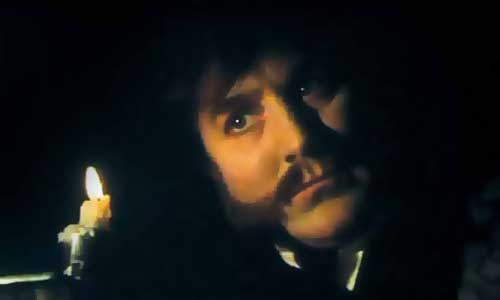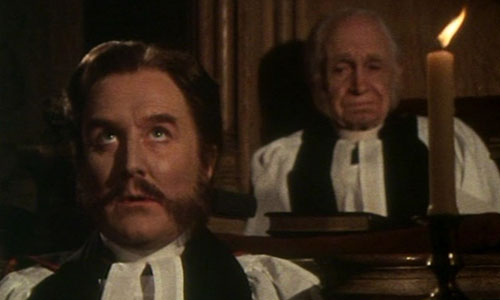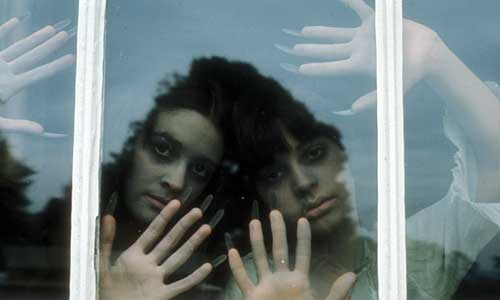RICHARD PHILLIPS-JONES unearths some facts on the production and locations of A Ghost Story for Christmas, a much loved British TV institution.

So… you’ve got the Christmas pudding ready, some mulled wine, crackers, Bing Crosby on the stereo… your Christmas is sorted, yes?
Not quite… for those of us of a spooky disposition, you gotta have a good ghost story, or Christmas isn’t Christmas. Before you dig out your copy of Ghost Stories Of An Antiquary, a fire burning in the hearth, allow us to divert you with these interesting tidbits…
The BBC’s run of tales throughout the 1970s, mostly helmed by director Lawrence Gordon Clark, have become as much of an essential festive ingredient as a box of Paxo. Although often referred to as the first in the series, 1968’s Whistle And I’ll Come To You was actually an unrelated production, directed by Jonathan Miller for the BBC arts programme Omnibus. The series proper would begin three years later…
A Ghost Story for Christmas facts
The Stalls of Barchester (1971)

- The first film was made in 10 days on a budget of around £8,000.
- Exteriors were shot at Norwich Anglican Cathedral, a place with a ghostly presence of its own – a phantom medieval bishop has been reportedly sighted there.
- It debuted on Christmas Eve 1971 on BBC1, sandwiched between an episode of The Onedin Line and a live broadcast of the Midnight Mass from the Roman Catholic Church of the Holy Name, Manchester – interesting scheduling, to say the least!
- It picked up around 9 million viewers – even in the days of just 3 channels this was impressive for a programme screened after 11pm.
A Warning to the Curious (1972)
- Made extensive use of the coast at Holkham Beach, Norfolk. It is currently a popular naturist’s spot.
- Clive Swift made his second appearance in the series, the only actor to play a lead role in two adaptations. However, David Pugh holds the record for most appearances overall: John in The Stalls Of Barchester, the porter in A Warning To The Curious and the herdsman in The Ash Tree.
- The first two productions were made outside of the BBC drama department, with Lawrence Gordon Clark writing, producing and directing. The films would come under the banner of the drama department the following year.
Lost Hearts (1973)

- Filming moved across to Lincolnshire for this installment. The main location was Harrington Hall, whose gardens were latterly open to the public until 2013. It is now a private residence once again.
- It is generally believed that Alfred Lord Tennyson used the gardens as the setting for his poem, Maud. It was inspired by Charlotte Rosa Baring – the Baring family lived there.
- During filming, the young actors playing the ghostly children gave the cast and crew a shock by jumping in on them in full costume during dinner, saying “Roast hearts for dinner, anyone?”
- For this production, Clark relinquished the producer role to Rosemary Hill, who would continue in that capacity for the rest of the original run.
The Treasure of Abbot Thomas (1974)
- Wells Cathedral provided the main setting this time, as James’ original locale of Germany was not practical for budgetary reasons.
- Serendipity dictated a key location in the grounds: One gargoyle in particular caught Clark’s attention, and when he headed to the roof to examine it, he found that the gargoyle appeared to be gazing down at a strange tunnel. This was immediately requisitioned as the site of the titular treasure.
- It is said that H.R. Hardy, a housemaster at Edgeborough School, Frensham, Surrey, photographed two ghostly figures on a staircase at the cathedral during a visit in the 1950’s. It was also said that he showed the photograph to many of the boys schooled there. The current whereabouts of the picture are unknown.
The Ash Tree (1975)
- The production team was unable to find a suitable manor house with an Ash tree directly adjacent to it, as described in the original story, so some ingenuity was called for…
- Main exteriors were shot at Prideaux Place near Padstow, Cornwall. The house was featured in series 6, episode 4 of Most Haunted. Ghostly sightings there include a scullery boy, and a mysterious green lady, believed to be Honor Fortescue, who fell from the balcony after the death of her beloved Humphrey Prideaux. Whether she fell or was pushed is debated to this day.
- Scenes featuring the Ash tree were shot at a farmhouse nearby, where Clark and his family were living at the time. The crew left a hanging dummy witch after filming ended – it was discovered the next morning by Clark’s young son, who ran into the house screaming.
- The tree was decimated by the drought of the long hot summer of 1976, and was dead within a couple of years,
The Signalman (1976)
- The decision to make this Charles Dickens adptation was prompted by the belief that James’ remaining tales were simply too expensive to film on the available resources.
- Shooting took place on the Severn Valley Railway, at Bewdley Tunnel near Kidderminster. There have been reports of visitors hearing a ghostly train pass along the track at great speed, but not seeing anything! There are also tales of stations along the route being haunted.
- The railway’s management have downplayed such stories in the past, but have more recently run special Ghost Train services in late October.
- Filming was disrupted by children from a nearby school throwing rocks at the cast and crew as they tried to work,
Stigma (1977)
- The first story with a contemporary setting, from an original story by Clive Exton.
- Avebury’s stone circle provided the locale, and is a place with enough strange recorded happenings to populate an article of its own! The Most Haunted team visited in episode 5 of their first series.
- Lawrence Gordon Clark had left the BBC to go freelance by this point, but was invited back to make a seventh ghost story. He wanted to make a version of M.R. James’ Count Magnus, and a script was even readied, but lack of available BBC funds curtailed this venture.
- Clark noted that the budget and shooting schedule were tighter than usual. He also noted that he had no wish to do another modern ghost story after Stigma. However, he would make a contemporary adaptation of James’ Casting The Runes for Yorkshire Television in 1979, and return to the form for the underrated 1995 anthology series, Chiller.
The Ice House (1978)
- The original run ended with another contemporary story, this time written by John Bowen.
- The episode was directed by Derek Lister, whose other credits include lengthy runs helming Coronation Street and The Bill.
- Notably different in tone from its predecessors, it’s open to debate whether The Ice House really qualifies as a ghost story as such. It is, however certainly eerie. In retrospect, it might also be considered a bold attempt to try something different in the strand. However, it would bring the series to a halt, although repeats have become a staple of Christmas schedules since then, firstly on BBC2 and then BBC 4.
FINAL FUN FACT: The title, A Ghost Story For Christmas, was used in the Radio Times listings, but never actually appeared on screen. Regardless, it has firmly stuck with viewers.
What’s your favourite A Ghost Story for Christmas? Tell us in the comments section below!







